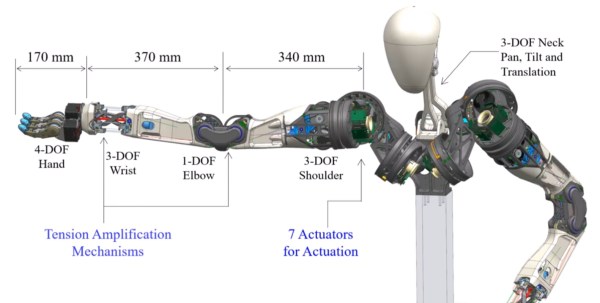Most of us probably have a vision of how “The Robots” will eventually rise up and deal humanity out of the game. We’ve all seen that movie, of course, and know exactly what will happen when SkyNet becomes self-aware. But for those of you thinking we’ll get off relatively easy with a quick nuclear armageddon, we’re sorry to bear the news that AI seems to have other plans for us, at least if this report of dodgy AI-generated mushroom foraging manuals is any indication. It seems that Amazon is filled with publications these days that do a pretty good job of looking like they’re written by human subject matter experts, but are actually written by ChatGPT or similar tools. That may not be such a big deal when the subject matter concerns stamp collecting or needlepoint, but when it concerns differentiating edible fungi from toxic ones, that’s a different matter. The classic example is the Death Cap mushroom (Amanita phalloides) which varies quite a bit in identifying characteristics like color and size, enough so that it’s often tough for expert mycologists to tell it apart from its edible cousins. Trouble is, when half a Death Cap contains enough toxin to kill an adult human, the margin for error is much narrower than what AI is likely to include in a foraging manual. So maybe that’s AI’s grand plan for humanity — just give us all really bad advice and let Darwin take care of the rest.
skynet8 Articles
Hackaday Links: May 7, 2023
More fallout for SpaceX this week after their Starship launch attempt, but of the legal kind rather than concrete and rebar. A handful of environmental groups filed the suit, alleging that the launch generated “intense heat, noise, and light that adversely affects surrounding habitat areas and communities, which included designated critical habitat for federally protected species as well as National Wildlife Refuge and State Park lands,” in addition to “scatter[ing] debris and ash over a large area.”
Specifics of this energetic launch aside, we always wondered about the choice of Boca Chica for a launch facility. Yes, it has all the obvious advantages, like a large body of water directly to the east and being at a relatively low latitude. But the whole area is a wildlife sanctuary, and from what we understand there are still people living pretty close to the launch facility. Then again, you could pretty much say the same thing about the Cape Canaveral and Cape Kennedy complex, which probably couldn’t be built today. Amazing how a Space Race will grease the wheels of progress.
Humanoid Robot Has Joints That Inspire
One of the challenges with humanoid robots, besides keeping them upright, is finding compact combinations of actuators and joint mechanisms that allow for good range of smooth motion while still having good strength. To achieve that researchers from the IRIM Lab at Korea University of Technology and Education developed the LIMS2-AMBIDEX robotic humanoid upper body that uses a combination of brushless motors, pulleys and some very interesting joint mechanisms. (Video, embedded below.)

From shoulder to fingers, each arm has seven degrees of freedom which allows the robot to achieve some spectacularly smooth and realistic upper body motion. Except for the wrist rotation actuator, all the actuators are housed in the shoulders, and motion is transferred to the required joint through an array of cables and pulleys. This keeps the arm light and its inertia low, allowing the arms to move rapidly without breaking anything or toppling the entire robot.
The wrist and elbow mechanisms are especially interesting. The wrist emulates rolling contact between two spheres with only revolute joints. It also allows a drive shaft to pass down the centre of the mechanism and transfer rotating motion from one end to the other. The elbow is a rolling double jointed affair that allows true 180 degrees of rotation.
We have no idea why this took two years to end up in our YouTube feed, but we’re sure glad it finally did. Check out some of the demo videos after the break. Continue reading “Humanoid Robot Has Joints That Inspire”
AI Beats Poker Pros: Skynet Looms
There have been a few “firsts” in AI-versus-human gaming lately, and the computers are now beating us at trivia, chess and Go. But in some sense, none of these are really interesting; they’re all games of fact. Poker is different. Aside from computing the odds of holding the winning hand, where a computer would obviously have an advantage, the key to winning in poker is bluffing, and figuring out when your opponent is bluffing. Until recently, this has helped man beat the machine. Those days are over.
Chess and Go are what a game theorist would call games of perfect information: everyone knows everything about the state of the game just from looking at the board, and this means that there is, in principle, a best strategy (series of moves) for every possible position. Granted, it’s hard to figure these out because it’s a big brute-force problem, but it’s still a brute-force problem where computers have an innate advantage. Chess and Go are games where the machines should be winning. Continue reading “AI Beats Poker Pros: Skynet Looms”
Skynet Takes Over…Academia?
A telescope isn’t an unusual thing to own if you are technically inclined. You might have even made one, at some point. However, despite improvements in optical technology and computer aiming devices, your four to twenty-inch instrument is never going to show you images like you see from big giant telescopes. The problem is, going really big requires a lot of investment in time, money, and sometimes even real estate. The big scopes get buildings constructed for them, and in exotic locations; why would you build a 24-inch scope only to try to see through the light pollution in your backyard?
Here’s an idea: take an astronomy class at a college and use their big telescope. Well, who has the time and money for that? Actually, you do. Skynet is a global network of telescopes headquartered at the University of North Carolina. As part of their mandate, they offer several tuition-free astronomy classes over the Internet. The best part? You also get free time on Skynet’s telescopes to complete your class assignments. There is a small fee (between $45 and $65) to a “benefit corporation” to administer assignments. You do get a certificate upon graduation. If you don’t want to do the assignments and you don’t want a certificate, you can still “take” the classes by simply watching them on YouTube. You can see one of the classes in the video below.
Autonomous Vehicle-Following Vehicle
Humanity has taken one step closer to Skynet becoming fully aware. [Ahmed], [Muhammad], [Salman], and [Suleman] have created a vehicle that can “chase” another vehicle as part of their senior design project. Now it’s just a matter of time before the machines take over.
The project itself is based on a gasoline-powered quad bike that the students first converted to electric for the sake of their project. It uses a single webcam to get information about its surroundings. This is a plus because it frees the robot from needing a stereoscopic camera or any other complicated equipment like a radar or laser rangefinder. With this information, it can follow a lead vehicle without getting any other telemetry.
This project is interesting because it could potentially allow for large convoys with only one human operator at the front. Once self-driving cars become more mainstream, this could potentially save a lot of costs as well if only the vehicle in the front needs the self-driving equipment, while the vehicles behind would be able to operate with much less hardware. Either way, we love seeing senior design projects that have great real-world applications!
Hexapod Robot Terrifies Humans And Wallets

[Kevin] brings us Golem, his latest robot project. Golem is crafted not of clay and stone like his namesake, but of T6 Aluminum and Servos. We don’t have a banana for scale, but Golem is big. Not [Jamie Mantzel’s] Giant Robot Project big, but at 2.5 feet (76.2 cm) in diameter and 16 lbs (7.3 Kg), no one is going to call Golem a lightweight. With that kind of mass, standard R/C servos don’t stand much of a chance. [Kevin] pulled out all the stops and picked up Dynamixel MX64 servos for Golem’s legs. Those servos alone propelled the Golem’s costs well beyond the budget of the average hobbyist. Kevin wasn’t done though. He added an Intel NUC motherboard with a fourth generation i5 processor, a 120 Gigabyte solid state drive, and 8 Gigbytes of Ram. Sensing is handled by gyros, accelerometers, and an on-board compass module. We’re assuming from the lack of a GPS that Golem will mainly see indoor use. We definitely like the mini subwoofer mounted on Golem’s back. Hey, even robots gotta have their tunes.
Golem is currently walking under human control via a Dualshock 3 controller paired via bluetooth. [Kevin’s] goal is to use Golem to learn Robotic Operating System (ROS). He’s already installed ubuntu 13.04 and is ready to go. [Kevin] didn’t mention a vision system, but based on the fact that some of his other robots use the Xtion pro live, we’re hopeful. We can’t wait to see Golem’s first autonomous steps.
Continue reading “Hexapod Robot Terrifies Humans And Wallets”















